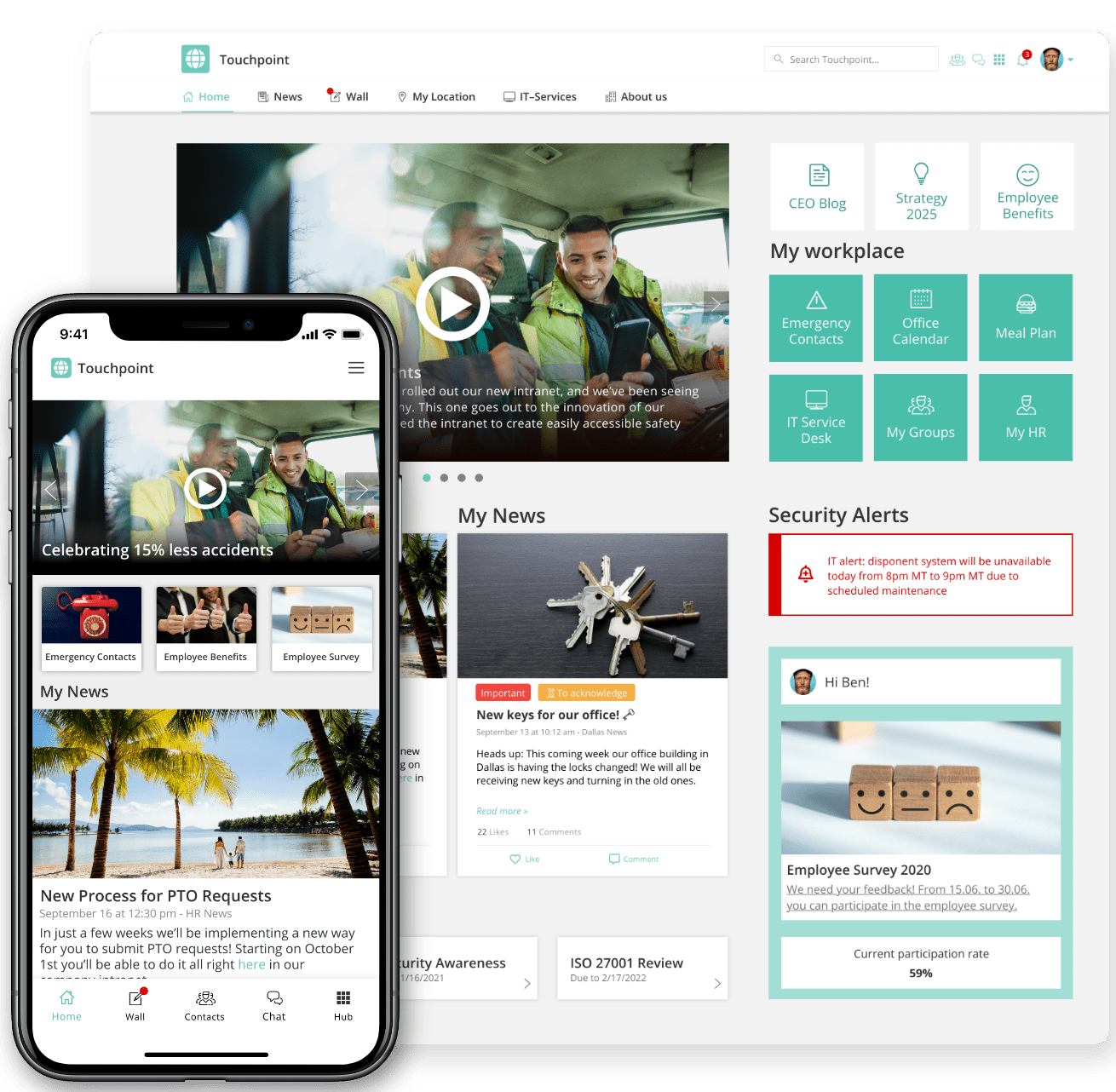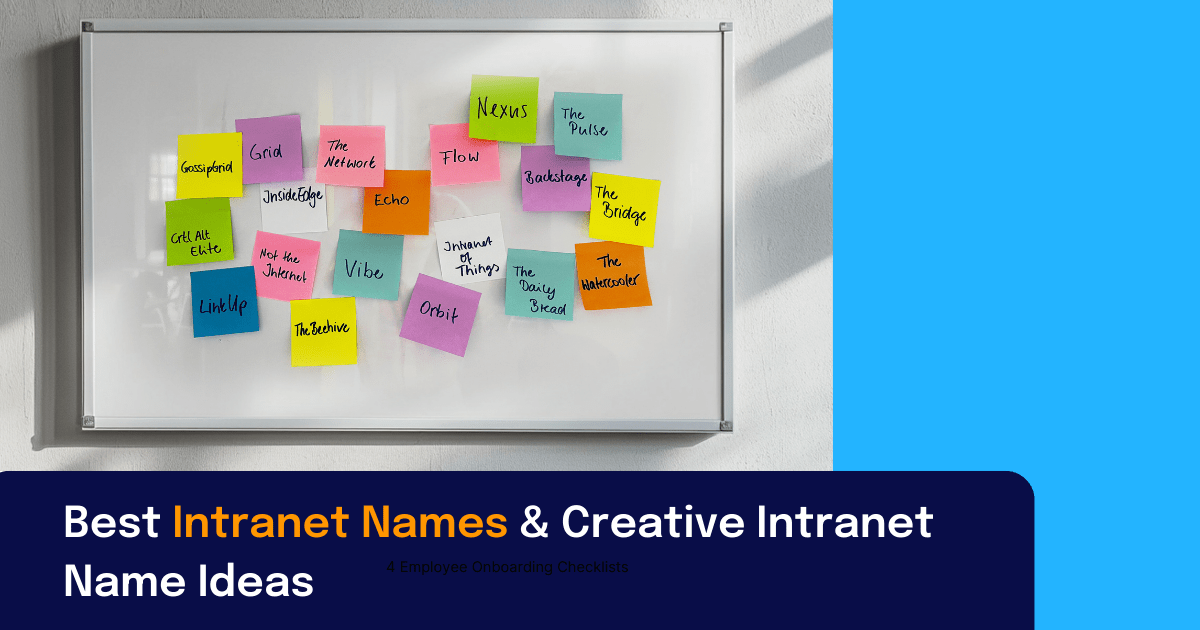A well-functioning company intranet can significantly improve business performance and positively impact how employees operate in countless settings. But there’s no set number of intranet benefits or a single ROI figure that can characterize every platform. That’s why this article will focus specifically on the latest iteration of intranets.
The “Front Door Intranet” (aka the “omnichannel intranet” or the “employee experience intranet”) puts employee needs first and foremost. In other words, it’s ready-made for serving current business concerns. These include the recent proliferation of remote work and the organizational issues related to it.
Why an intranet is essential for digital workplaces and employee engagement
As of January 2023, Gallup reported that the percentage of “engaged” workers in the US is only 32%. This downward trend, which began in late 2021, has particularly affected women and younger workers. As for job type, the decline has been recorded across the board, from healthcare and white-collar workers to those working remotely or on-site.
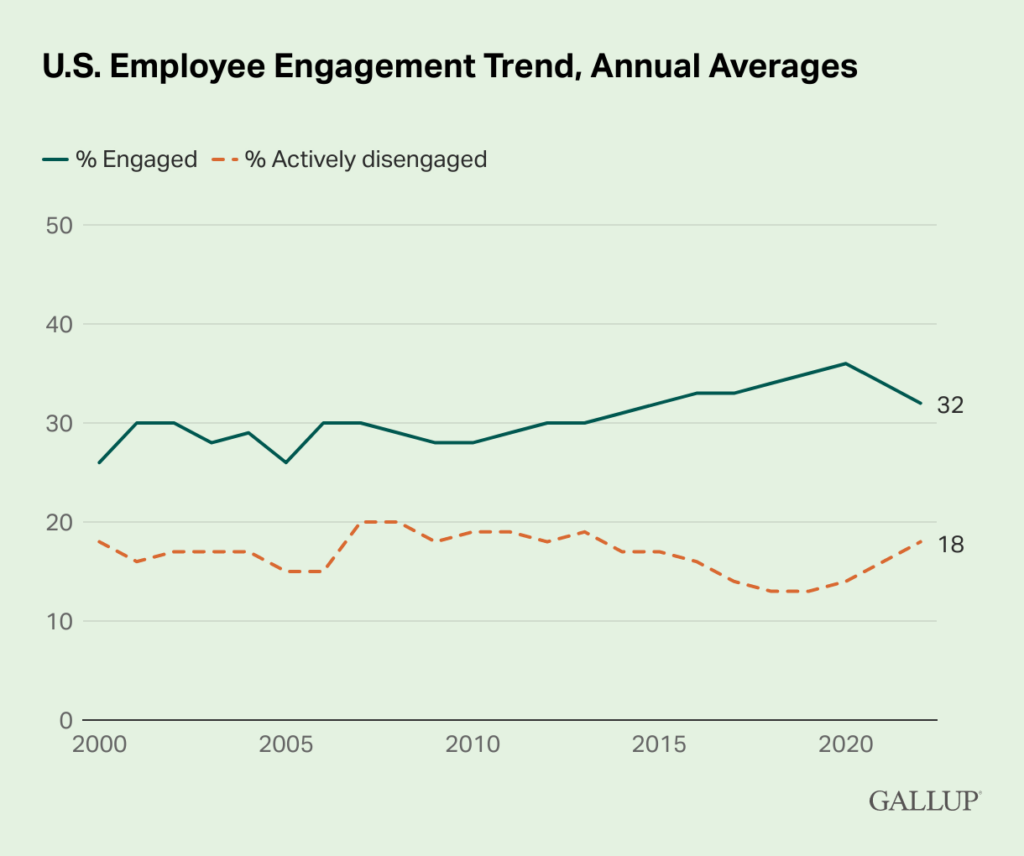
Given that companies reporting highly engaged employees outperform their peers by 147% in earnings per share, Gallup’s findings should be a cause for concern.
So what does this have to do with modern intranets?
Ideally, an intranet serves as a centralized platform for communication, collaboration, and knowledge sharing within an organization. It gives employees easy access to company news, announcements, and updates. In doing so, it fosters a sense of transparency, inclusion, and identification with the employer brand.
By enabling the sharing of documents, resources, and best practices, an intranet promotes collaboration and efficiency among team members. Moreover, it offers interactive features such as forums, social networking tools, and employee directories, which facilitate networking, relationship-building, and cross-departmental engagement.
A well functioning intranet enhances internal communication, knowledge management, and employee connectivity, promoting a more engaged and productive workforce.
How does a modern intranet create a better digital employee experience for the way people work now?
The way we work has changed, and as it has, intranets have gained increased importance. In remote, non-desk, and asynchronous workplaces, intranets play a crucial role in facilitating effective communication, collaboration, and access to information.
Intranets serve as a centralized hub where employees can connect, stay informed, and collaborate on projects regardless of their physical location or time zone. They provide a platform for sharing important company updates, policies, and announcements, while also offering features such as document repositories, knowledge bases, and a targeted source of company news. This enables remote workers and desk workers alike to access and share information at their convenience, reducing dependency on synchronous communication.
Intranets enable connectivity, knowledge sharing, and teamwork in remote environments, ensuring productivity and engagement among employees.
An intranet provides a range of valuable benefits, all of them contributing to a more productive, connected, and empowered workforce.
- Improved Communication: An intranet serves as a centralized platform for communication, ensuring that important company information, news, and updates reach all employees. It enables transparent and timely communication, reducing miscommunication and keeping everyone on the same page.
- Easy Access to Information: With an intranet, employees can easily access vital information such as company policies, procedures, and guidelines. It acts as a central repository for documents, resources, and knowledge, making information readily available and reducing time spent searching for information.
- Enhanced Collaboration: Intranets promote collaboration by providing a shared workspace where employees can access and collaborate on documents, projects, and tasks. It streamlines teamwork, encourages knowledge sharing, and fosters a culture of collaboration, leading to increased efficiency and productivity.
- Streamlined Workflows: Intranets often include workflow automation tools that streamline and automate routine tasks, reducing manual effort and increasing efficiency. They can facilitate employee self-service processes like leave requests, expense management, and document approvals, improving productivity and freeing up time for more strategic work.
- Employee Engagement and Empowerment: Intranets promote employee engagement by offering interactive features such as discussion forums, employee directories, and social networking tools. They facilitate connections between employees, encourage collaboration, and create a sense of community and belonging. Additionally, by providing access to information and resources, intranets empower employees to take ownership of their work and make informed decisions.
- Knowledge Management: Intranets act as a repository for storing and sharing organizational knowledge, best practices, and lessons learned. They enable capturing and preserving valuable knowledge within the company, ensuring that expertise is shared and accessible to all employees. This promotes continuous learning, innovation, and informed decision-making.
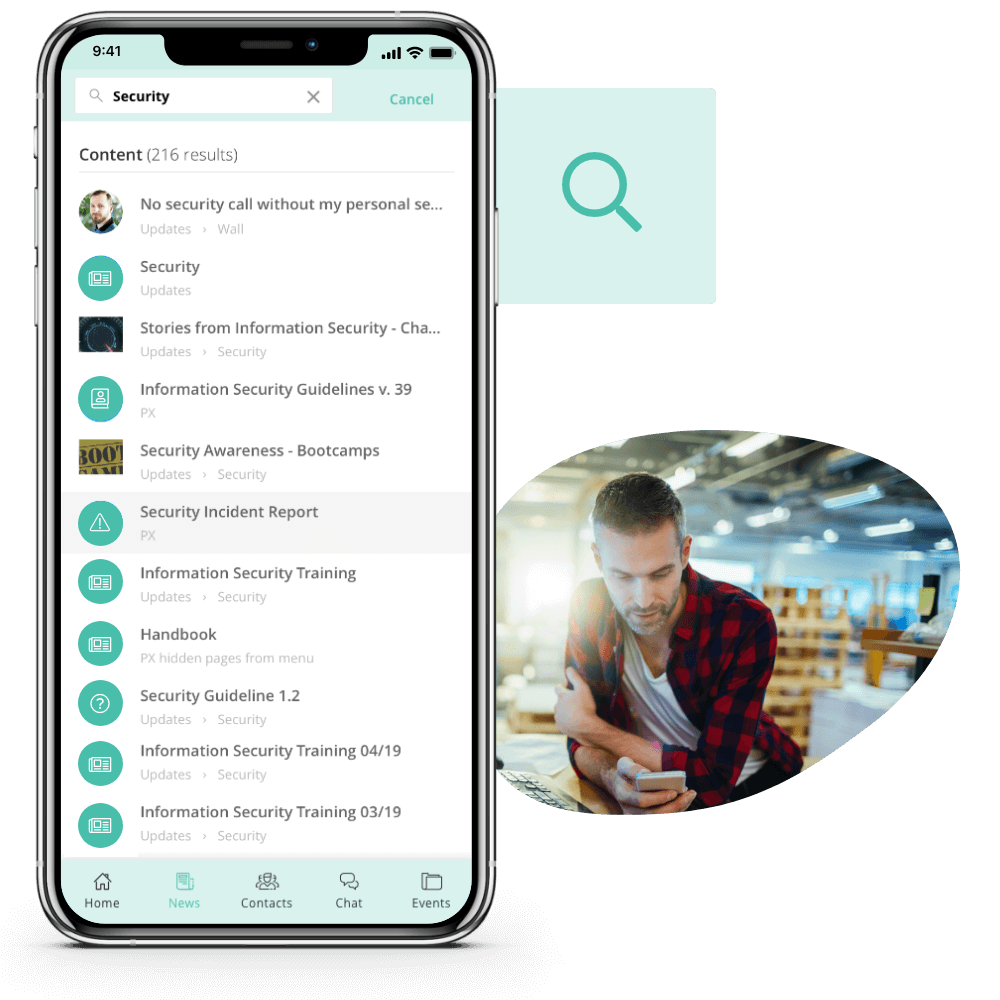
Intranets are the Versatile Solution for All Industries
While intranets can bring benefits to a wide range of industries, their specific implementation and usefulness will vary based on the unique needs and characteristics of each industry. That being said, there are several industries where intranets have proven to be particularly valuable. Here are some examples:
- Corporate Organizations: Intranets are commonly used in corporate organizations across various sectors. They help streamline internal communication, facilitate collaboration among departments, and provide a central hub for sharing important information, policies, and updates.
- Healthcare: In the healthcare industry, intranets play a crucial role in improving communication and knowledge sharing among medical staff, administrators, and support teams. They can be used for sharing patient records, medical guidelines, scheduling information, and facilitating collaboration among different healthcare professionals.
- Education: Intranets are valuable in educational institutions, providing a platform for teachers, staff, and students to collaborate, share resources, and access educational materials. They can also be used for administrative purposes such as course scheduling, grading, and communication with parents.
- Manufacturing: In the manufacturing industry, intranets help in streamlining internal processes, coordinating production schedules, and facilitating communication between different departments. They can also be used to share training materials, safety protocols, and quality control procedures.
- Financial Services: In the financial sector, intranets are used for secure internal communication, document management, and sharing financial reports and updates. They can also include features for compliance monitoring and regulatory information.
- Retail and Hospitality: Intranets can be valuable for retail and hospitality industries, providing a platform for sharing product information, sales updates, inventory management, and facilitating communication among different branches or locations.
These are just a few examples. The applicability of intranets can extend to various other industries as well. The key is to tailor the intranet to meet the specific needs and objectives of the organization within the context of its industry.
Bridging the Distance: The Benefits of Intranets in Connecting Companies Across Locations and Time Zones
Here are five key benefits that are important for global companies implementing an intranet. These five benefits work together to address some of the most important challenges faced by global companies, such as effective communication, collaboration, knowledge sharing, and fostering a unified organizational culture.
- Centralized Communication: The ability to have a centralized platform for communication is crucial for global companies. It ensures consistent and timely dissemination of company-wide information, announcements, and updates, fostering transparency and alignment across geographically dispersed teams.
- Global Collaboration: Facilitating collaboration among employees across different regions is essential for global companies. An intranet provides a virtual workspace where employees can collaborate on projects, share documents, and exchange ideas, promoting teamwork, innovation, and efficient workflows.
- Knowledge Sharing and Best Practices: The ability to capture and share knowledge, best practices, and lessons learned across different regions is valuable for global companies. An intranet serves as a repository for this information, enabling employees to access expertise and resources from colleagues worldwide, promoting efficiency, standardization, and continuous improvement.
- Multilingual Support: With a diverse workforce across different regions, multilingual support is vital. An intranet that offers multilingual capabilities allows companies to provide information and communication in employees’ preferred languages, ensuring inclusivity, understanding, and effective global communication.
- Employee Engagement and Connection: Engaging and connecting employees across different regions is crucial for fostering a sense of belonging and collaboration. An intranet with social features, discussion forums, and employee directories facilitates connections, networking, and collaboration, enhancing employee engagement, motivation, and overall satisfaction.
Enhancing Workplace Culture: Intranets Can Help
An intranet can significantly enhance workplace culture by fostering communication, collaboration, and engagement among employees. It serves as a platform for sharing company values, mission, and goals, providing a centralized space where employees can access and contribute to the organizational culture.
A modern intranet can feature discussion forums, social networking tools, and employee recognition programs that encourage open dialogue, knowledge sharing, and a sense of community. It allows employees to connect with colleagues, share ideas, and collaborate on projects, breaking down geographical barriers and promoting a culture of inclusivity and teamwork.
Additionally, an intranet can provide access to learning resources, training materials, and internal events, enabling continuous learning and professional development, which contributes to a culture of growth and innovation.
By facilitating effective communication, collaboration, and opportunities for connection and growth, an intranet plays a pivotal role in shaping and enhancing workplace culture.

Achieving Organizational Clarity with Intranets
The top three benefits of intranets for company-wide messages and clarity are:
- Centralized Communication: Intranets serve as a central hub for company-wide messages, ensuring that important information reaches all employees consistently. This centralized approach eliminates the need for multiple communication channels and reduces the risk of information getting lost or diluted, fostering clarity and alignment within the organization.
- Consistent Messaging: Intranets help establish and maintain a consistent message across all departments and locations. By sharing company-wide messages through a single platform, intranets ensure that everyone receives the same information simultaneously, eliminating discrepancies and promoting clarity and understanding throughout the organization.
- Immediate and Timely Updates: Intranets enable real-time communication, allowing companies to deliver urgent messages promptly. Whether it’s a sudden change in company policies, emergency updates, or time-sensitive announcements, intranets facilitate quick dissemination of information, ensuring employees are well-informed and can adapt accordingly. This immediate and timely communication enhances clarity and reduces confusion or misunderstandings.
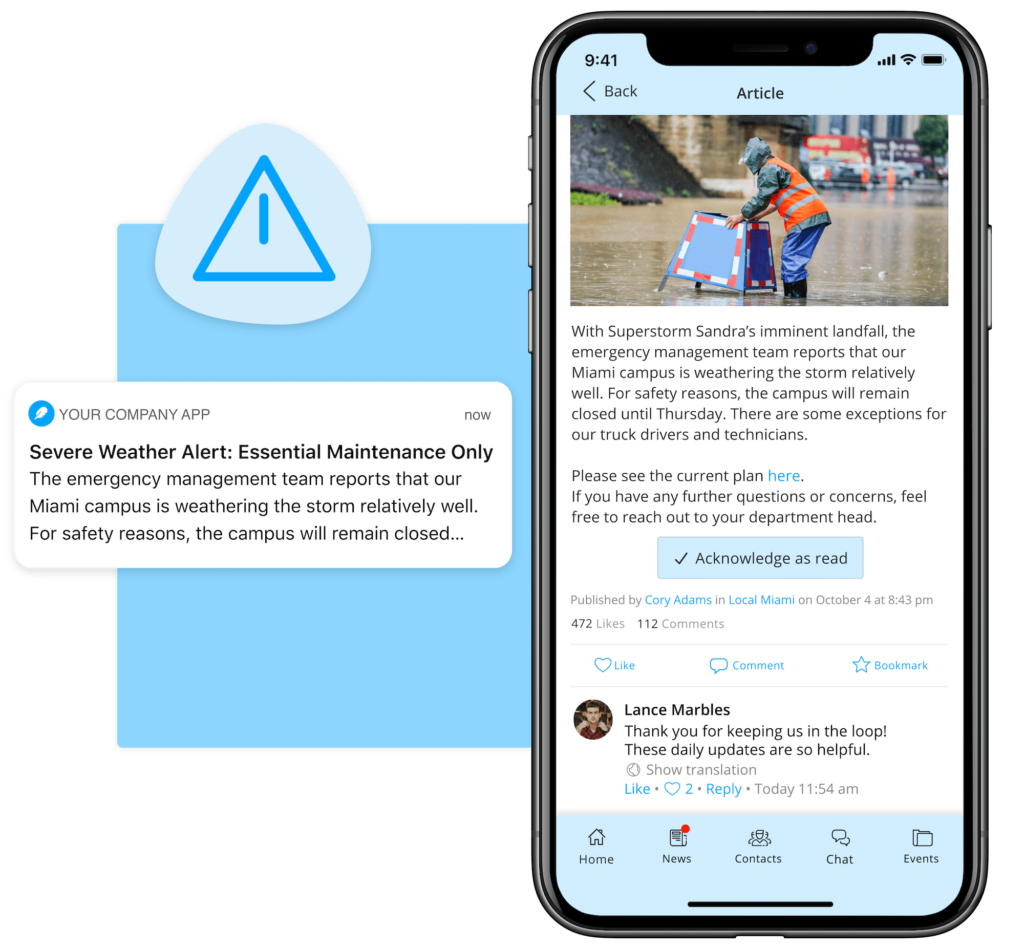
Streamlining Communication: The Benefits of Intranets in Reducing Emails and Meetings
We love email. And we know it’s not going away any time soon. But it’s worth noting that Intranets offer a range of features that can effectively reduce company-wide emails and save time by providing an array of communication channels and efficient information sharing.
With a centralized information repository, employees can access important documents and resources without the need for lengthy email exchanges or searching through long email threads. News feeds and announcements on the intranet allow company-wide updates to be easily accessed by all employees, reducing the need for repetitive emails. Discussion forums and collaboration spaces enable conversations and idea-sharing, eliminating the necessity for extensive email communication or meetings. Task and project management tools facilitate team collaboration within the intranet, minimizing email volume and the need for frequent meetings.
Additionally, self-service information such as FAQs and knowledge bases empower employees to find answers independently, reducing email inquiries and time-consuming meetings. Overall, intranets offer effective means to streamline communication, reduce email overload, and save valuable time by avoiding unnecessary meetings.
Reach all your employees from the office to the frontline
Intranets aren’t only for desk workers. Today’s modern, mobile intranets can be designed to cater to the needs of both desk workers and non-desk workers, such as field workers, remote workers, and frontline employees.
Intranets provide a front door on mobile devices or dedicated terminals, through which employees from the office to the front line can stay connected and access relevant information and tools whether on the go or at their desks. They save time by providing a centralized platform for communication, collaboration, and accessing resources, regardless of the type of work being performed.
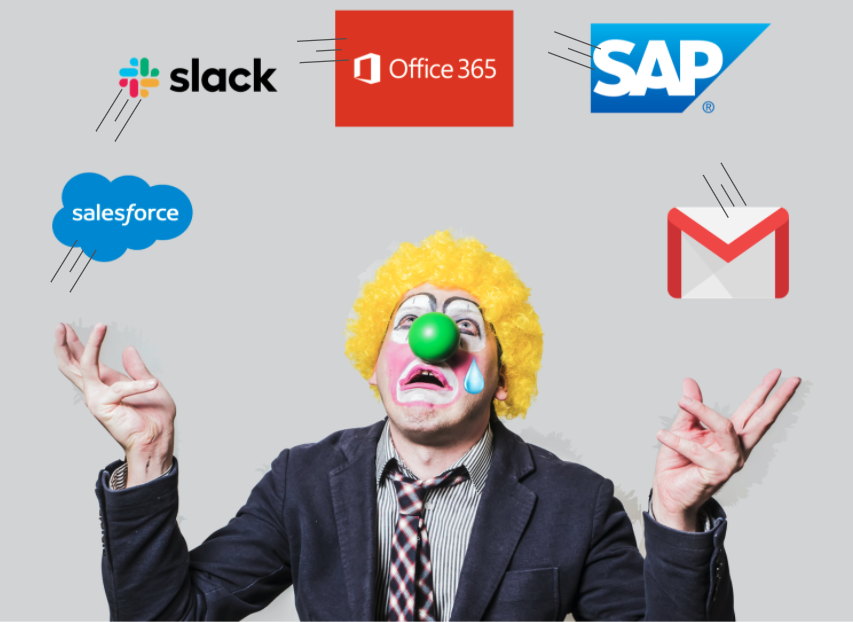
For example, field technicians can use the intranet to access work orders, update project status, communicate with colleagues, and access training materials. Frontline employees in retail or hospitality can access important company updates, policies, and procedures. Remote workers can use the intranet to connect with their team members, participate in discussions, and access shared documents.
Intranets can be tailored to accommodate the specific needs and workflows of different types of workers, ensuring that all employees have access to relevant information, communication channels, and collaborative tools. This inclusivity allows organizations to foster engagement, improve internal communication, and promote a sense of unity among all employees, regardless of their work environment or role.
Unlocking the Benefits of Intranets for Every Department
A modern intranet brings significant benefits to internal communications, IT, and HR departments within organizations. Here’s how each department can benefit:
Powering Internal Communication: The Benefits of Intranets for Internal Comms Teams
- Streamlined Communication: Internal communications teams can leverage a modern intranet to streamline communication by delivering company-wide messages, announcements, and updates through a centralized platform. This ensures consistent messaging, reduces email overload, and increases the visibility and reach of important information.
- Targeted Messaging: Intranets allow internal communications teams to target specific employee groups or departments with tailored messages. This enables effective communication campaigns, ensuring that relevant information reaches the right audience, enhancing engagement and understanding.
- Employee Engagement: Modern intranets often provide features like discussion forums, social networking, and employee recognition programs. Internal communications teams can utilize these tools to foster employee engagement, facilitate two-way communication, and create a sense of community within the organization.
The IT Advantage: How Intranets Can Benefit Your IT Department
- Centralized Information: IT departments can leverage an intranet to provide a centralized repository of technical documentation, guidelines, and FAQs. This empowers employees to find self-service solutions to common IT-related issues, reducing the number of help desk requests and saving IT resources.
- Software and Service Updates: Intranets can be used to communicate software updates, system maintenance schedules, and service disruptions to employees. This ensures that employees are aware of any IT-related changes or disruptions, reducing confusion and providing transparency.
- IT Service Requests: Intranets often include IT service request forms or ticketing systems. This enables employees to submit and track their IT service requests, streamlining the process and improving efficiency for both employees and the IT department.
Unlocking Employee Potential: How Intranets Can Benefit Your HR Department
- Employee Onboarding: Intranets can support HR departments by providing a platform for onboarding new employees. HR teams can share important documents, policies, and training materials through the intranet, ensuring that new hires have easy access to essential information.
- HR Policies and Resources: Intranets serve as a repository for HR policies, employee handbooks, benefit information, and other HR-related resources. This enables employees to access and refer to HR materials as needed, fostering clarity and consistency in HR processes.
- Employee Self-Services: Intranets often offer self-service functionalities where employees can access and update personal information, view pay stubs, request time off, and enroll in benefits. This empowers employees to manage their HR-related tasks independently, reducing administrative burden on the HR department.
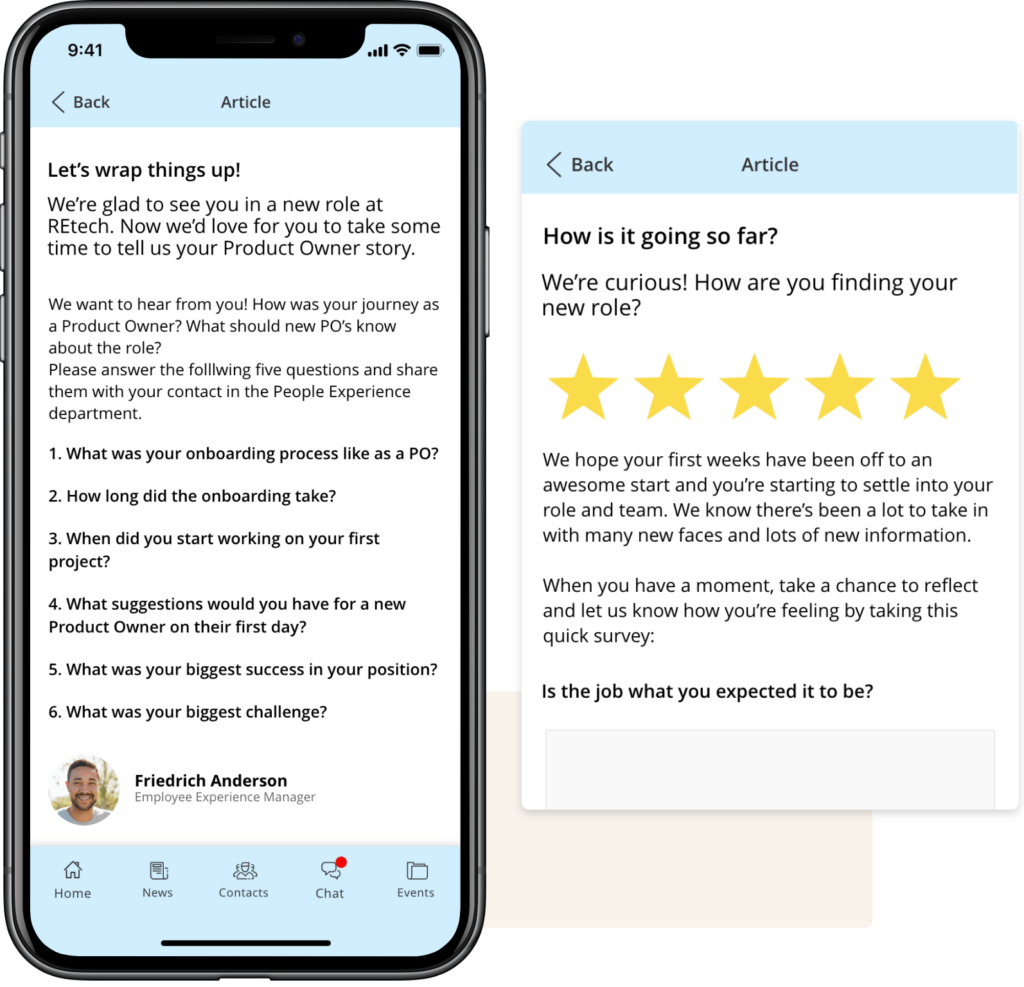
By leveraging a modern intranet, internal communications, IT, and HR departments can improve communication efficiency, enhance employee engagement, streamline processes, and provide employees with easy access to relevant information and services. This ultimately contributes to a more productive and connected workforce.
Some downsides of traditional intranets
Older intranets often suffer from several shortcomings that hinder their effectiveness and user experience. Firstly, outdated intranets often have a poor user interface and lack user-friendly features. The design tends to be clunky and unintuitive, making it difficult for employees to navigate and find the information they need.
Secondly, older intranets often lack responsive design, meaning they are not optimized for mobile devices. In an era where remote work and mobile connectivity are prevalent, this limitation severely restricts accessibility and usability. Additionally, older intranets typically have limited collaboration and communication capabilities. They lack real-time messaging, file sharing, and integrated project management tools such as Slack and Teams, hindering efficient collaboration among teams.
Lastly, security vulnerabilities are a common issue with older intranets. Outdated software and weak security protocols make them susceptible to cyberattacks, putting sensitive company data at risk. Overall, the faults of older intranets revolve around their poor user experience, limited functionality, and compromised security.
What Makes Staffbase the Modern Intranet of Choice?
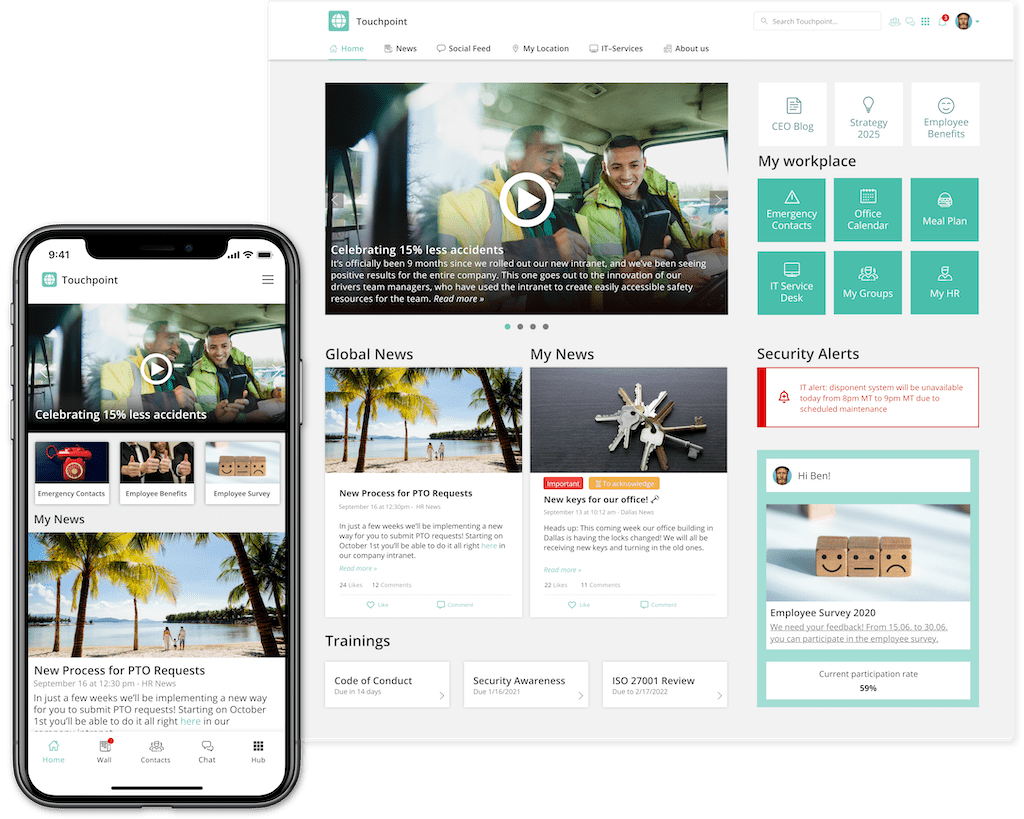
Intranets have changed. But their reputation hasn’t. That’s too bad, because today’s intranets are tailor-made for our new world of work. Designed for business users and future-proofed for growth, with an elevated digital employee experience and centralized access to the digital workplace, the number-one market-leading Staffbase intranet is an indispensable workplace tool.
Why?
It has a clear purpose:
The Staffbase intranet is focused on communication — with easy access to employee services and resources.
It’s designed for business users:
Intuitive, non-technical admin. — The Staffbase intranet can be owned by business users/comms with minimal IT support.
Communication planning and collaboration — It allows communicators to execute strategic campaigns without silos.
Analytics that measure impact — Useful metrics foster actionable decision making with employee experience insights.
It’s future-proofed for growth:
Multi-experience by design — The Staffbase intranet offers personalized experience across all personas and channels. It takes a mobile-first approach for all employee personas and groups.
Built for scale — Powered by flexible admin structures, robust content governance, community moderation, and ISO 27001-awarded security
Enterprise-ready AI — Optimize workflows for end-users and admins with a Microsoft-powered AI feature, Staffbase Companion.
Elevated digital employee experience:
Amplify employee voice — Provide a centralized hub for employees to discuss, engage, and give feedback
Automated journeys for moments that matter — Automated pre-, on- and post-boarding journeys
Personalized for every employee — Customized and relevant news and information-sharing for employees in companies of all sizes
Multilingual interaction — Empower global engagement with translation in 100+ languages
Centralized access to the digital workplace:
Seamless integrations with HR and IT systems — Easily connect workplace tools to provide employees with centralized access to digital self-services and business apps
Secure, targeted access to files — Surface documents and files from repositories like SharePoint and Google Drive in a way that’s safe and targeted.
Search that spans the digital workplace:
Streamline workflows with federated search across tools like Microsoft 365 and Google Workspace.
It’s important to note that while these benefits generally apply to Staffbase as an intranet platform, specific features and functionalities may vary based on the version and configuration chosen by your organization.
